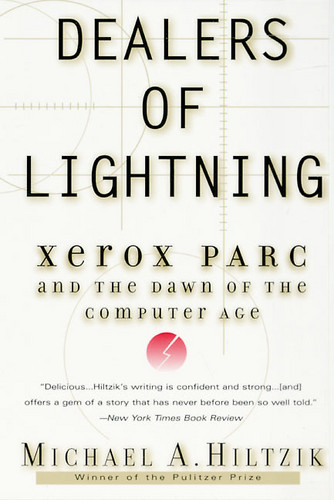
The work the Xerox Palo Alto Research Center did in the 1970′s is legendary. That means that some of the stories about it aren’t true. It’s true that they either invented or contributed significantly to the technologies that would later become part of the PC revolution: The laser printer, the visual user interface, desktop publishing, local networks, object-oriented programming and video animation.
And it’s true that Xerox failed to use these inventions to launch the PC market, as companies like Apple, IBM and Microsoft would eventually do. But Michael Hiltzik writes in Dealers of Lightning that it’s not true that Xerox never made any money of PARC. The laser printer became hugely profitable. It just took a while to convince management that it was worth launching.
Xerox PARC lived apart from Xerox proper, separated by both geographical distance and cultural distance. PARC had the smartest and most far-seeing people in the field of computing. Xerox had a cautious corporate culture, and a vague sense that maybe it ought to invest some of its profits into computer research.
It wasn’t a good match. But it’s too simple to say that if Xerox hadn’t fumbled, the unborn PC market would have been theirs for the taking. Success in computing is difficult, and often short-lived. Apple and Microsoft both got started with ideas from Xerox, but the fact that these companies are still relevant today, 30 years later, is because they’re still making great stuff – and because they’ve been very lucky. Xerox wasn’t. They just had some damn fine ideas.